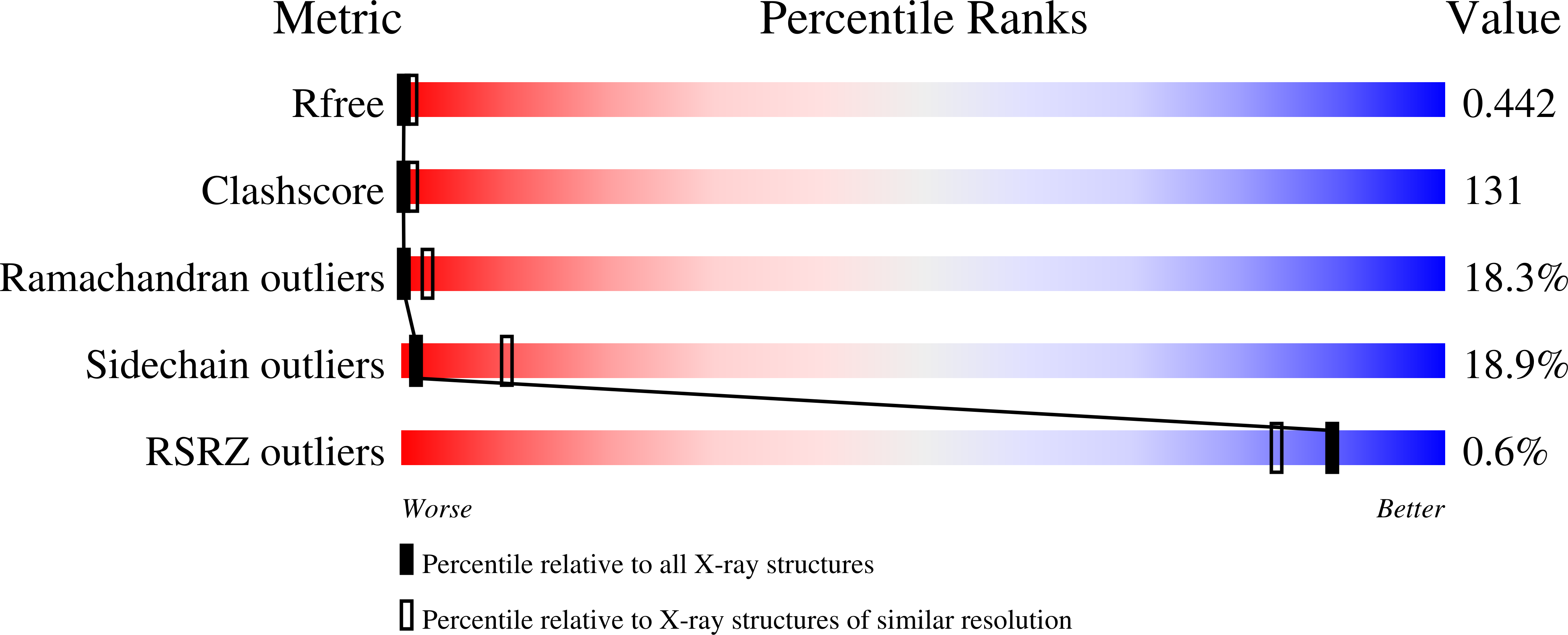Nanoporous crystals of chicken embryo lethal orphan (CELO) adenovirus major coat protein, hexon.
Xu, L., Benson, S.D., Burnett, R.M.(2007) J Struct Biol 157: 424-431
- PubMed: 17071105
- DOI: https://doi.org/10.1016/j.jsb.2006.08.017
- Primary Citation of Related Structures:
2INY - PubMed Abstract:
CELO (chicken embryo lethal orphan) virus is an avian adenovirus that is being developed as a gene transfer vector. Its trimeric major coat protein (942 residues, 106,709 Da) has 42% sequence identity to human adenovirus type 2 (AdH2) hexon and 45% to AdH5 hexon. For structural studies, the growth of CELO virus has been optimized, and its hexon purified and crystallized. The hexon crystals, the first non-human example, diffract to 3.9 A resolution. Molecular replacement using the AdH5 model was used to identify the location of the CELO hexon within the unit cell. There is one hexon monomer in the asymmetric unit of the trigonal space group P321 (a=b=157.8 A, c=114.2 A, gamma=120 degrees) and the solvent content is 67.8%. The hexons pack in a hexagonal honeycomb so that large approximately 100 A diameter channels run through the entire crystal. This remarkable property of the crystals lends itself to their exploitation as a nanomaterial. Structural studies on CELO will elucidate the differences between avian and human adenoviruses and contribute to a better understanding of adenoviruses with non-human hosts.
Organizational Affiliation:
The Wistar Institute, 3601 Spruce Street, Philadelphia, PA 19104, USA.














